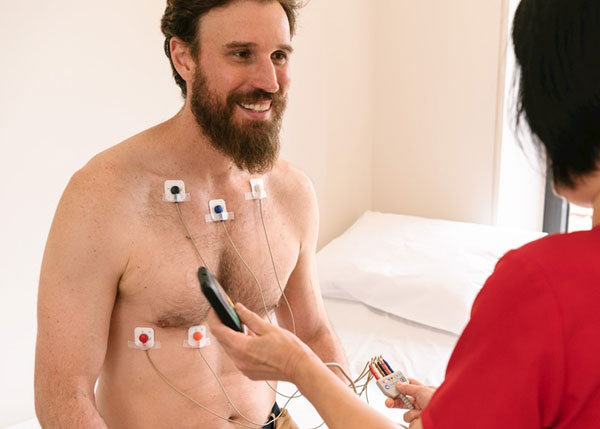Holter (ECG)

An electrocardiogram (ECG) Holter is a device that can be worn for 24-48 hours and record an electrocardiogram. A normal electrocardiogram only assesses rhythm for a few seconds, so most arrhythmia cases cannot be detected with an electrocardiogram. Therefore, if arrhythmia is suspected in someone with a fast heartbeat, a Holter electrocardiogram is used, which can monitor the heart rate for a longer period of time.
Indications
Holter monitors are mainly used for 2 purposes:
Determining heart rhythm and abnormalities in rhythm
Identifying when the heart muscle is not adequately supplied with blood (ischemia)
The Holter monitor records your heart rhythm during your daily activities. The Holter can also be used in the following situations:
Evaluation of chest pain
Evaluation of patients with pacemaker implantation
To determine the effect of medicines
Symptoms such as dizziness, palpitations, difficulty breathing, fainting, and chest pain may have a variety of causes. Holter monitoring can help determine if these symptoms are cardiac in origin. A heartbeat that is too fast or too slow can cause dizziness and fainting, but because the symptoms are short-lived, they may not be detected on an ECG. Holter monitoring provides important information about which part of the heart is causing the palpitations and guides treatment accordingly.
If the heart is not getting enough blood due to the narrowing of the cardiac vessels, the data recorded by Holter will change and this will be assessed during the exam. Thanks to Holter, doctors can identify high-risk patients or those at risk of sudden death after a heart attack.
How to Wear a Holter Monitor?
After removing upper body clothing, a specific area of the chest wall is shaved for men (to prevent the device from falling off the chest), and the Holter monitor wires are attached to the chest wall using adhesive electrodes.
The Holter Monitor's recording device is the size of a Walkman that attaches to a belt worn around the waist. It is recommended that you record your complaints and time on a piece of paper while wearing the Holter.
Wear loose-fitting clothing and avoid showering while on Holter. Continue with other daily activities.
When you return the halter, the file will be loaded on your computer and you will receive a report. There is absolutely no risk while wearing Holter.
After the procedure
Your doctor will review your records and discuss the results with you. If you change your medication, you may need to repeat the Holter test.
